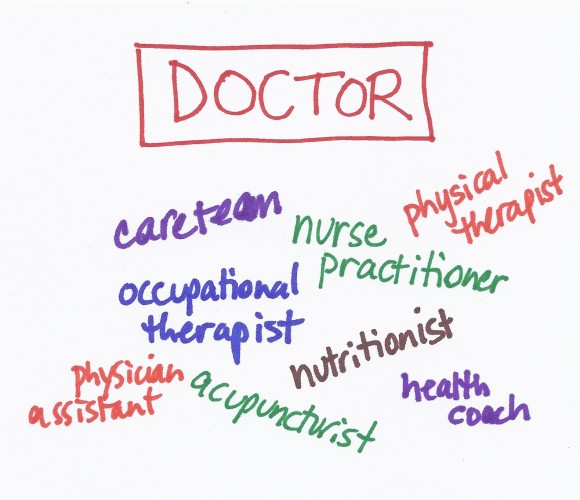The Doctor
 I did my internal medicine residency at a city hospital where I knew I would have lots of autonomy and see a broad array of diseases. My coworkers and I were on-call every third night and were usually up all night. We did everything for ourselves – transporting patients from the emergency room to their hospital beds or to the x-ray department, drawing blood, etc. We were even expected to look at all of the patient’s laboratory specimens – urine, sputum, spinal fluid, etc. – under a microscope. We never asked a patient what he or she wanted – it never occurred to us that there was a choice.
I did my internal medicine residency at a city hospital where I knew I would have lots of autonomy and see a broad array of diseases. My coworkers and I were on-call every third night and were usually up all night. We did everything for ourselves – transporting patients from the emergency room to their hospital beds or to the x-ray department, drawing blood, etc. We were even expected to look at all of the patient’s laboratory specimens – urine, sputum, spinal fluid, etc. – under a microscope. We never asked a patient what he or she wanted – it never occurred to us that there was a choice.
Things are different now. It is impossible to keep up-to-date with all of the medical advances and there are now a huge number of tests available to diagnose diseases. No one person can manage all of the complexities of care so doctors have become more specialized. Medicine needs to become more of a team sport – where specialists work together as a team to help the patient. And doctors need to accept the roles of new types of care providers as team members such as physician assistants and nurse practitioners who may be especially suited to provide routine care. We also now recognize that physical therapy, occupational therapy and nutrition are integral elements of care and that stress management, acupuncture, weight loss, health coaching and numerous other interventions can improve health in certain situations. In addition to being able to work as part of a team and help coordinate the team, doctors need to recognize that the most important member of the team is the patient.
Doctors also need to recognize the limitations of scientific knowledge (evidence) and that there is often no single correct way to manage a patient’s illness. The patient needs to engage in the decisionmaking process and needs to understand what the research really says. The doctor must find ways to explain the available research to the patient or find other people or sources to explain the information. This is the Care Triad – patients and doctors working together to make the right health decisions for the patient using the best available evidence. The doctor must also be open to exploring new sources of evidence – from social media, new types of technology (such as body sensors) and data generated from patients (perhaps from online patient communities).
Despite all the changes in healthcare, medical education has not changed much since I did my training. We need to rethink and redesign medical education to reflect this new reality. Even further, we need to think about how we select medical students to ensure that, in addition to being able to handle the scientific rigors, they are also able to work as a member of a team, communicate well with patients and other team members and incorporate new sources of scientific knowledge into their thinking and practice.
3 thoughts on “The Doctor”